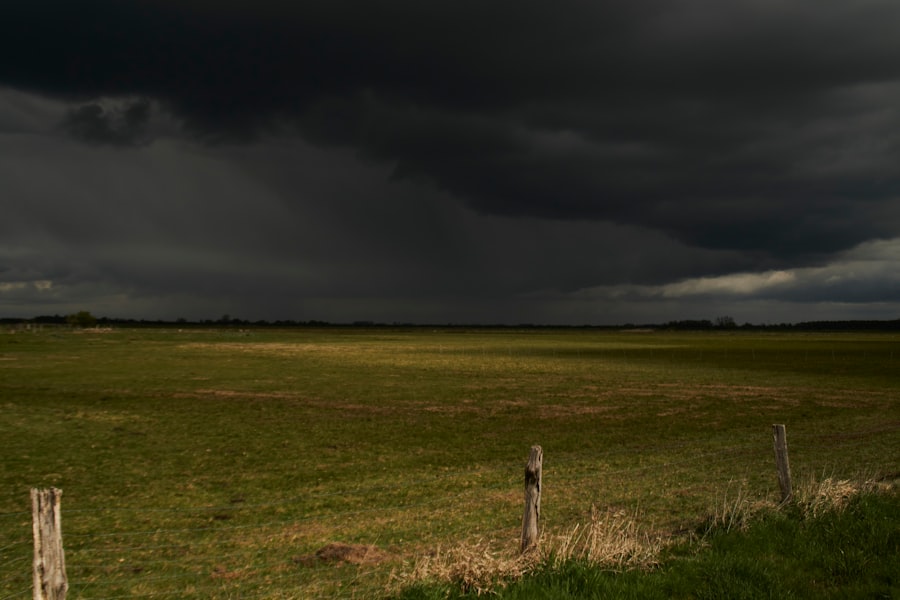Tornadoes are among nature’s most powerful and destructive phenomena, capable of wreaking havoc in mere minutes. As I delve into the science behind these swirling columns of air, I find it fascinating yet terrifying how they form. Tornadoes typically develop from severe thunderstorms, particularly supercells, which are characterized by a rotating updraft known as a mesocyclone.
When conditions are just right—warm, moist air at the surface combined with cooler, drier air aloft—a tornado can form. The sheer force of these storms can lead to winds exceeding 300 miles per hour, making them one of the most violent weather events on Earth. Understanding the different classifications of tornadoes is crucial for recognizing their potential danger.
The Enhanced Fujita Scale categorizes tornadoes from EF0 to EF5 based on the damage they cause. An EF0 tornado may cause minor damage, while an EF5 can obliterate entire neighborhoods. This scale not only helps meteorologists communicate the severity of a tornado but also aids individuals like me in assessing the risks associated with severe weather.
By familiarizing myself with the characteristics and classifications of tornadoes, I can better prepare myself and my family for the possibility of encountering one.
Creating a Family Emergency Plan
Designating a Meeting Place
In our plan, we designate a specific meeting place where we can gather if we are separated during a storm. This location should be easily accessible and known to all family members.
Important Contacts and Roles
I make sure to include contact information for each family member, as well as a list of important phone numbers, such as local emergency services and relatives who live outside the immediate area. Additionally, we identify roles for each family member, such as gathering supplies or ensuring the safety of our pets. By assigning specific tasks, we can work together efficiently during a crisis.
Practicing the Plan
I also emphasize the importance of practicing our plan regularly so that everyone knows what to do when the time comes. This practice not only reinforces our preparedness but also helps to alleviate any fears or uncertainties that may arise when faced with a real tornado threat.
Identifying Safe Shelter Locations

Identifying safe shelter locations is a vital part of tornado preparedness that I take seriously. In my home, I have designated an interior room on the lowest level as our primary shelter area. This room is away from windows and exterior walls, providing the best protection against flying debris and high winds.
I also ensure that my family knows where this location is and how to access it quickly in case of an emergency. It’s essential to have a plan in place so that we can reach safety without wasting precious time. Beyond my home, I also consider other safe shelter options in my community.
Local schools, community centers, and designated storm shelters often provide refuge during severe weather events. I make it a point to familiarize myself with these locations and their operating hours. Additionally, I keep an eye on local news and weather reports to stay informed about any community-wide alerts regarding tornado safety.
By knowing where to go both at home and in public spaces, I feel more confident in my ability to protect myself and my loved ones during a tornado.
Assembling an Emergency Kit
| Emergency Kit Item | Quantity | Importance |
|---|---|---|
| Water bottles | 3 gallons per person | Essential for hydration |
| Non-perishable food | 3-day supply | Provides sustenance during emergencies |
| Flashlight | 1 per person | Provides light during power outages |
| Battery-powered radio | 1 | For receiving emergency information |
| First aid kit | 1 | For treating minor injuries |
Assembling an emergency kit is another crucial step in my tornado preparedness efforts. I start by gathering essential supplies that will sustain my family for at least 72 hours in case we become trapped or cut off from resources.
I also make sure to include a manual can opener since some of these items may require it. Additionally, I pack a first aid kit with bandages, antiseptics, and any necessary medications that my family members may need.
This includes copies of identification cards, insurance policies, and medical records stored in a waterproof container. I also add flashlights with extra batteries, a battery-powered radio for weather updates, and blankets for warmth. By taking the time to assemble this kit thoughtfully, I feel more secure knowing that my family will have access to essential items during a crisis.
Monitoring Weather Alerts
Monitoring weather alerts is an ongoing responsibility that I take seriously, especially during tornado season. I make it a habit to check local weather forecasts regularly and stay informed about any severe weather warnings issued by meteorologists. One of the most effective tools at my disposal is a weather app on my smartphone that provides real-time alerts for my area.
This way, I can receive notifications about impending storms or tornado watches and warnings even when I’m busy with daily activities. In addition to using technology, I also pay attention to local news broadcasts and radio stations for updates on severe weather conditions. Understanding the difference between a tornado watch and a warning is crucial; a watch indicates that conditions are favorable for tornado formation, while a warning means that a tornado has been sighted or indicated by radar.
By staying vigilant and informed about changing weather patterns, I can take proactive measures to protect myself and my family when severe weather strikes.
Practicing Tornado Drills

Reinforcing Our Emergency Plan
During these drills, we practice moving quickly to our designated safe shelter location while remaining calm and collected. This repetition not only reinforces our emergency plan but also builds confidence in our ability to respond effectively under pressure.
Addressing Concerns and Clarifying Roles
I also encourage open discussions during these drills about any concerns or questions family members may have regarding tornado safety. This dialogue allows us to address fears and clarify roles within our emergency plan.
Empowering Decisive Action
By making these drills engaging and informative, I aim to create an environment where everyone feels empowered to act decisively when faced with a real tornado threat.
Staying Informed During a Tornado
Staying informed during a tornado is critical for ensuring safety and making informed decisions in real-time. When a tornado warning is issued, I immediately turn on my battery-powered radio or check my smartphone for updates from reliable sources such as the National Weather Service or local news stations. These sources provide crucial information about the storm’s path, intensity, and any changes in its status that may affect our safety.
In addition to monitoring official channels, I also communicate with neighbors and friends to share information about the storm’s progress. Social media platforms can be valuable tools for receiving updates from local authorities or sharing experiences with others in the community. However, I remain cautious about misinformation that can spread quickly online; therefore, I always verify information through trusted sources before acting on it.
After the Tornado: Safety and Recovery Measures
After experiencing a tornado, the focus shifts from immediate safety to recovery measures that ensure long-term well-being for myself and my family. The first step is assessing our surroundings for any hazards such as downed power lines or unstable structures before leaving our shelter area. Safety is paramount; therefore, I take care not to venture out until authorities have declared it safe to do so.
Once we are outside and safe, I begin documenting any damage to our property for insurance purposes. Taking photographs of affected areas helps provide evidence for claims and assists in recovery efforts later on. Additionally, I reach out to neighbors to check on their well-being and offer assistance if needed; community support is vital during recovery periods.
In the days following the tornado, I stay informed about available resources for recovery assistance through local agencies or organizations dedicated to disaster relief. Whether it’s food distribution centers or temporary housing options, knowing where to turn for help can make all the difference during this challenging time. By remaining proactive and engaged in recovery efforts, I contribute not only to my family’s healing but also to the resilience of my community as we rebuild together after such a devastating event.
If you are looking for more information on tornado safety tips for families, you may also be interested in learning about the differences between hurricanes and tornadoes. Check out this article for a comparison of these two powerful weather phenomena. Understanding the unique characteristics of hurricanes and tornadoes can help families better prepare for severe weather events.

